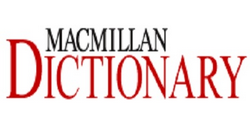Copy of `Macmilla Dictionaries - Dictionary Terms`
The wordlist doesn't exist anymore, or, the website doesn't exist anymore. On this page you can find a copy of the original information. The information may have been taken offline because it is outdated.
|
|
|
Macmilla Dictionaries - Dictionary Terms
Category: Language and Literature > Dictionary Terms
Date & country: 28/08/2013, USA
Words: 54
|
abbreviationa short form of a word or phrase, for example: tbc = to be confirmed; CIA = the Central Intelligence Agency
antonyma word that means the opposite of another word
collocation/collocate a word that is often used with another word
compounda combination of two or more words that is used as a single word. The three different types of compound are noun compound, adjective compound and verb compound.
concordancea list of the words used in a text or group of texts. The normal way of consulting a corpus is to look at concordances which show words in the context in which they occur.
consonanta speech sound made by stopping all or some of the air going out of your mouth
corpus (corpora or corpuses)a collection of written and/or spoken language stored on a computer or on the Internet, and used for language research and writing dictionaries
countable a countable noun is a noun that has a plural and can be used after a or an when it is singular
defining vocabularythe words that are used to explain the meanings of words in a dictionary
definitiona statement of what a word or expression means
derivativea word that is formed from another word, for example an adverb that is formed from an adjective by adding -ly
diphthonga sound consisting of one or two vowels that is the combination of two sounds said one after the other
discourse written or spoken language, especially when it is studied in order to understand how people use language
entryone of the short sections into which a dictionary is divided. An entry explains the meaning or meanings of a word or expression.
examplea phrase or sentence in a dictionary entry that shows how a word or expression is used. It usually follows the definition.
frequencystar a ★ that indicates how frequently a word or expression occurs in English
frequencythe number of times that a word or expression occurs, for example in a corpus of English
grammar code a label such as
guide words in a paper dictionary, the two words at the top of a dictionary page that show the first and last words on that page
headwordone of the list of words in a dictionary, that is followed by an explanation of what it means
homographa word that is spelled the same as another word but has a different part of speech, and is therefore explained in a separate entry
idiom an expression whose meaning is different from the meaning of the individual words
intransitivea word describing a verb that has no direct object
lexicographer someone whose job is to look at what words mean and how they are used, and to use this information to write entries for a dictionary
lexicography the job or skill of writing dictionaries
meaningthe thing, action, feeling, idea etc that a word or words represent
menu box a box at the beginning of a long dictionary entry showing a summary of that word
menu definitions the short definitions used in the menu boxes
metaphora word or phrase that means one thing and is used for referring to another thing in order to emphasize their similar qualities
past participlethe form of a verb used to make perfect tenses and passive forms of verbs
past simplethe form of a verb used to express what existed or happened in the past
phrasal verba verb formed from two or (sometimes three) parts: a verb and an adverb or preposition
phrasea group of words that are used together in a fixed expression
polysemous a polysemous word has more than one meaning
pragmatics the study of how people use language
prefixa group of letters that is added to the beginning of a word to change its meaning
red worda word that is shown in red in the Macmillan English Dictionary and which is one of the 7,500 most frequent words of the language
regional labela label such as
semanticsthe study of words and their meanings
sensea separate meaning of a word or phrase. Entries for words that have more than one meaning are divided into senses.
stress mark a mark that shows which part of a word is pronounced with more emphasis
style and attitude labels labels such as
subjectlabels that show that a word is used as part of a language of a particular subject and is not used in normal everyday English
subsensea meaning that is very closely related to another meaning, and is therefore shown in the same sense as it
suffix a group of letters added to the end of a word to make a different word
syllable a word or part of a word that has only one vowel sound
synonyma word that has the same meaning as another word
thesaurus a book or a list that contains words that have similar meanings
transitivea word describing a verb that is always used with a direct object
uncountablean uncountable noun has no plural form and cannot be counted in individual units
usage note a note at the beginning or end of an entry that gives information on the way words are used by people when they speak or write their language
vowela sound that you make when you speak without closing your mouth or throat
wordclass/part of speech one of the main grammatical groups that a particular word belongs to according to the way it is used in a sentence, for example noun, verb, adjective, or adverb
World English Corpusa 200 million-word corpus of real-life modern written and spoken English

